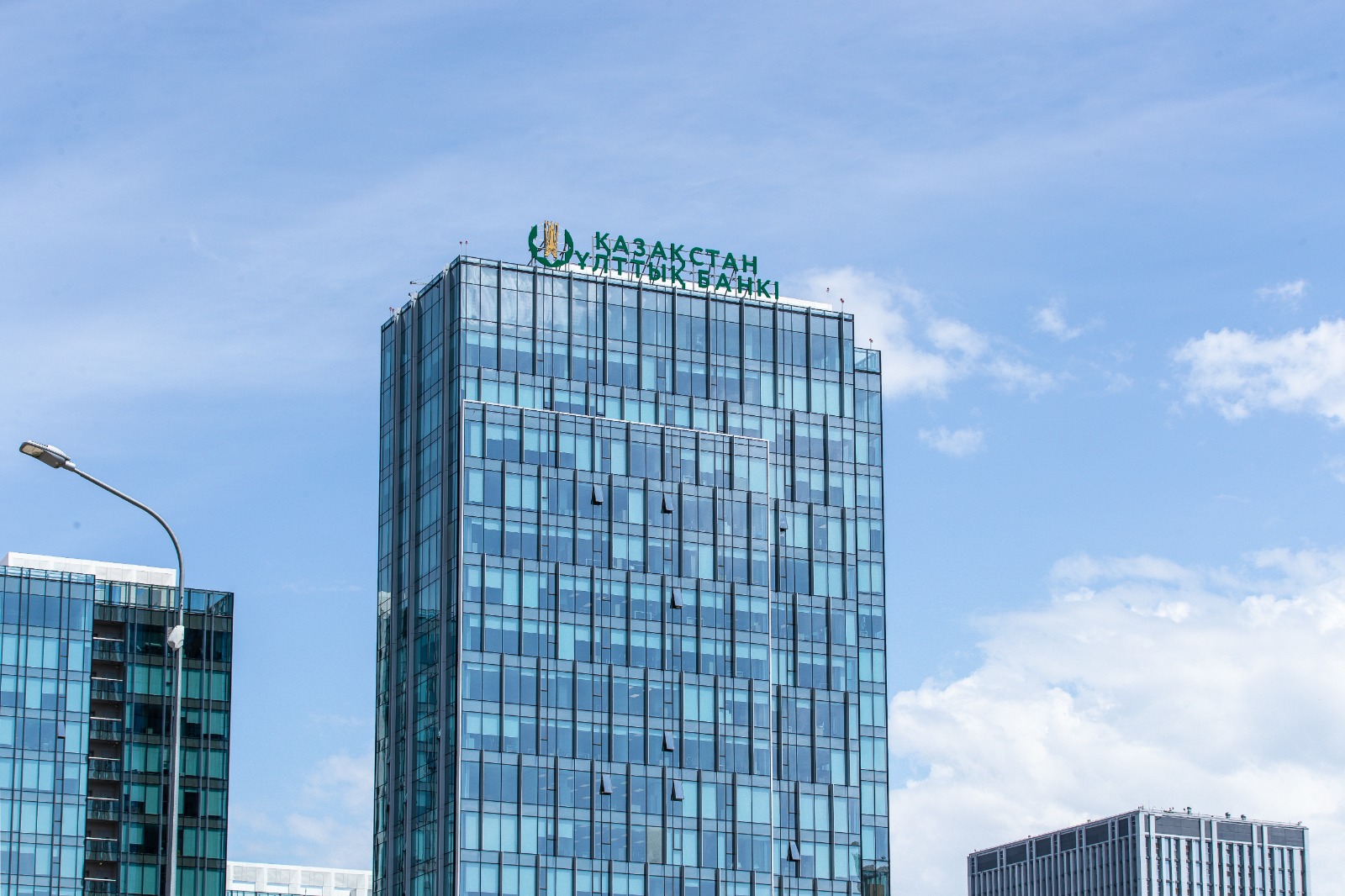ASTANA — National Bank Chairman Timur Suleimenov announced that the bank’s Monetary Policy Committee reduced the base rate to 14.75% on Feb. 23, the bank’s press service reported. In a press statement, Suleimenov noted that one of the pivotal factors driving this decision is the trajectory of annual inflation, which is exhibiting a deceleration despite a diminishing rate, aligning closely with projected trends.

The building of the National Bank of Kazakhstan in Astana. Photo credit: National Bank of Kazakhstan press service
Decelerating inflation trends
According to the bank’s statement, household inflation expectations have seen a consecutive decline over the past three months, signaling a positive trend. However, indicators reflecting the stable component of inflation have accelerated, underscoring the necessity for sustained efforts to maintain price stability.
Despite these encouraging developments, the economy continues to grapple with pro-inflationary pressures stemming from robust consumer demand, fiscal stimulus initiatives, and persistent inflation expectations.
The global inflation rates are on a downward trend, sustained by contractionary monetary policies in various countries and declining energy and food prices. However, the statement noted that logistical challenges in certain regions and pockets of inflation acceleration in Russia and China raise concerns.
Suleimenov said that monitoring key indicators such as domestic demand, inflation expectations, fiscal policy uncertainties, and external economic conditions underscores the importance of maintaining moderately tight monetary conditions.
“The primary objective remains steadfast: achieving a confident reduction of inflation to 5% within the medium term,” Suleimenov said in the statement.
According to the bank’s forecasts, inflation rates for this year are expected to be between 7.5% and 9.5%, while projections for 2025 stand at 5.5% to 7.5%. By 2026, inflation is anticipated to stabilize within the 5-6% range, moving closer to the target threshold.
However, risks to these forecasts persist, including uncertainties surrounding fiscal policy parameters, ongoing fiscal stimuli, inflationary pressures amidst unanchored expectations, and the possibility of increased sanctions against Kazakhstan’s principal trading partners.
Revised economic growth forecasts
The bank’s forecasts regarding economic growth for Kazakhstan have been revised upwards for 2024 to 3.5%-4.5% and maintained for 2025 at 5.5%-6.5%.
The anticipated growth in 2024 is attributed to domestic demand dynamics amid improving business sentiment, while 2025 is expected to witness higher growth driven by government initiatives and increased oil production at Tengizchevroil (TCO).
In 2026, economic growth is projected at 3.5%-4.5%, contingent upon various factors including oil price fluctuations and current forecast assumptions.
“It is imperative to note that these forecasts are grounded in the socio-economic development forecast of Kazakhstan and other pertinent government program documents. However, ongoing policy formulation efforts by the government and related bodies to bolster economic growth may necessitate revisions to both inflation and GDP forecasts as these measures take effect,” Suleimenov said.
In an interview with The Astana Times in February, the National Bank said the primary factor driving GDP growth in 2024 in Kazakhstan is expected to be domestic demand, supported by government spending on the construction of educational facilities, infrastructure projects, and the modernization of housing and communal services.


